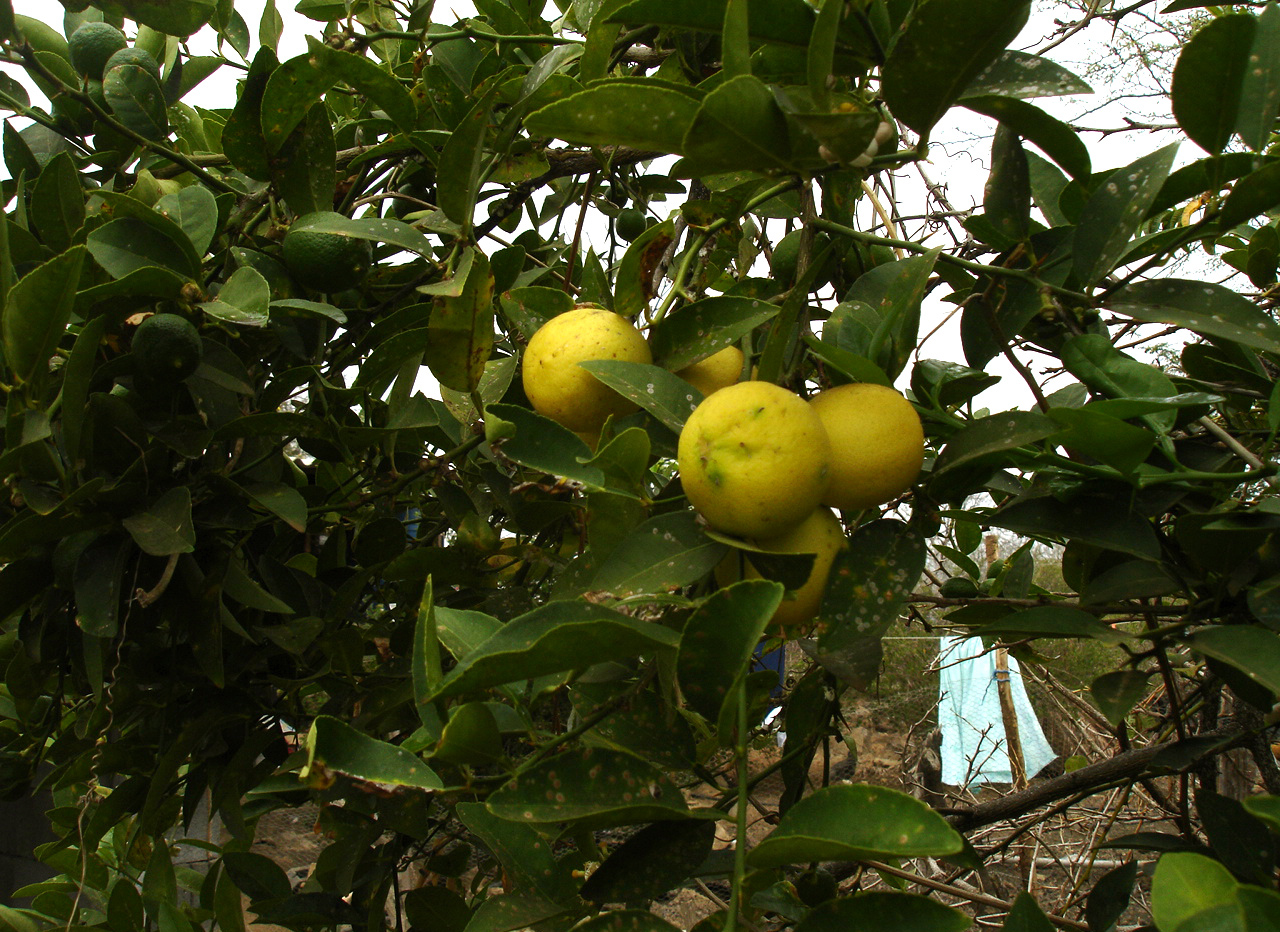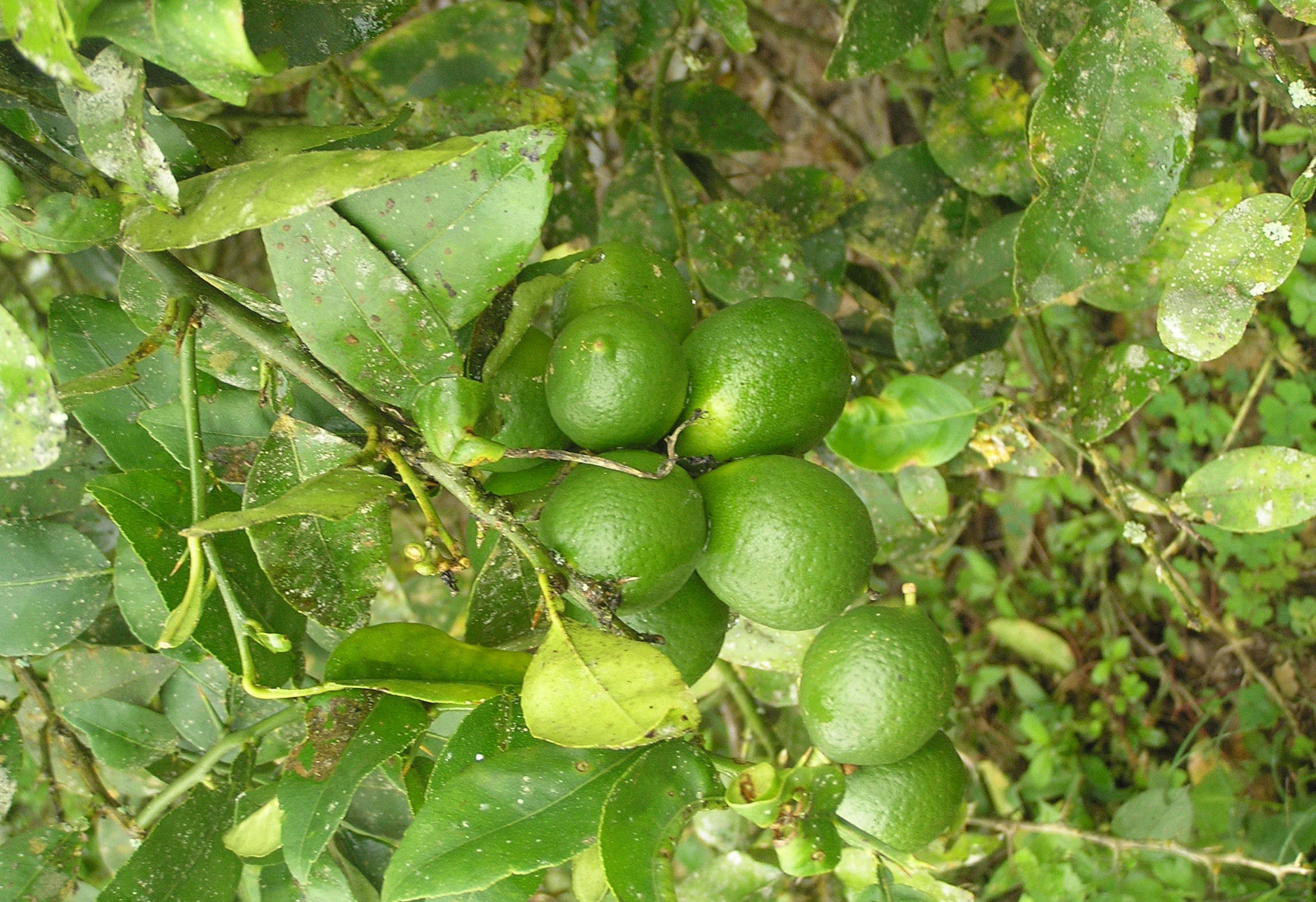Galapagos Species Database
The Galapagos Species Database shares the information about the species from our Natural History Collections.
Citrus × limon
limón amarillo, limón agrio, limón de carne, lemon




Trees 5 to 15 m, spiny, with thick and aromatic leaves. Leaves are ovate and serrate. Flowers have white petals and fruits are pale yellow-green when mature, with a fairly thick rind.
Trees 5 to 15 m, spiny, with thick and aromatic leaves. It starts blooming after 2 years. The fruits are eaten by animals. The seeds do not survive more than a year. Most species are grown for their fruit hybrids.
Domain
Eukaryota
Kingdom
Plantae
Phylum
Magnoliophyta
Class
Magnoliopsida (= Dicotyledoneae)
Order
Sapindales
Family
Rutaceae
Genus
Citrus
Species
× limon
Taxon category: Accepted
Syn.: Citrus limonum Risso; Citrus medica f. limon (L.) Hiroë
Taxon origin: Introduced - established
Habitat preferences: Grows in areas that are not dry, and does not tolerate freezing temperatures. Lemon trees are tolerant of nutrient-poor soil.
Trophic role: Primary producer
Reproductive biology: Starts blooming after 2 years. Fruits are dispersed by animals. Seeds do not survive for more than year.
Growth form: Trees
Distribution origin: Southeast Asia
Economic Use: The lemon is grown for its fruit.
Mode of introduction: Intentional
Introduced status: Naturalized
Invasive status: Invasive
Impact in Galapagos: In Galapagos, dense stands are found in the highlands of Floreana and San Cristobal. Dense stands filter light, shading the ground below.
Impact elsewhere: Many Citrus species are naturalized and can form dense stands that shade out the understory. Several species are recorded as invasive in the Pacific Islands.
Control methods elsewhere: Seedlings can be pulled manually, and adults can be killed with herbicide.
Year of first record: 1965
Map of specimen collection localities or observation records for this species in our collections database.
Distribution: Introduced to inhabited islands, Santiago, originally from Southeast Asia.
- Wiggins, I.L. Porter, D.M. (1971) Flora of the Galapagos Islands Standford University Press, Stanford.
- Reck, G. (1986) Personal notes from Bellavista agricultural fair, Feb 1986.
- Chavez, J. (1993) Diagnostico de la Agricultura y la Ganader¡a en la Provincia de Galapagos. Tesis.
- Clavijo, P. Valdebenito, H. & Hurtado, F. (1991) Plantas introducidas en las areas urbanas de las islas Galapagos. Typescript reports in files of Botany Dept.
- Lundh, J.P. (1995) Some additional information and comments on the Annotated Check list of Vascular Plants of the Galapagos Islands by Lawesson, Adsersen and Bentley. Charles Darwin Research Station, unpublished.
- Jaramillo, P. (1998) Distribución Espacial de la Vegetación Vascular y Dispersión de Especies Introducidas dentro del Parque Nacional Galápagos. Tesis de Doctorado en Biología, Universidad Central del Ecuador. Especialización ECOLOGIA DE POBLACIONES.
- Wolf, T. (1879) Ein Besuch der Galapagos-Inseln. Samml. Vorträgen 1(9/10): 196-304.
- Tropicos.org. (2017) Database of Missouri Botanical Garden. Tropicos.org. Missouri Botanical Garden. 06 Oct 2017 <http://www.tropicos.org
- Chen, J. Craven, L.A. (2007) Flora of China. Flora of China 13: 321–328. http://www.efloras.org/florataxon.aspx?flora_id=2&taxon_id=10599
- Stevens, W.D. Ulloa, C., Pool, A., & Montiel, O.M. (2001) Flora de Nicaragua. Monogr. Syst. Bot. Missouri Bot. Gard. 85: i–xlii, 1–2666.
- Guézou, A. Trueman, M., Buddenhagen, E., Chamorro, S., Guerrero, A.M., Pozo, P., Atkinson, R. (2010) An extensive Alien Plan Inventory from the Inhabited Areas of Galapagos Plos One/ www.plosone.org. Volume 5/ Issue 4/e10276
- Lawesson, J.E. (1987) Plantas exóticas en las Islas Galápagos, un resumen. Memorias. Taller sobre investigación Botánica y manejo en Galápagos. Pg. 17-23.


Dispersal propagule: Fruit